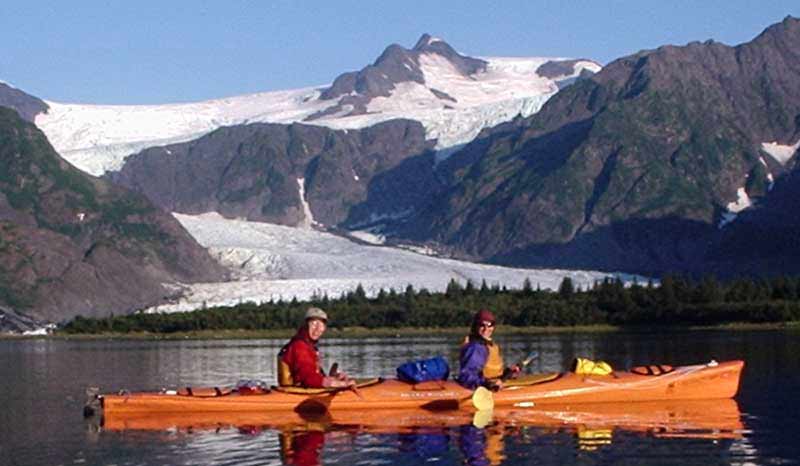

Recent ResearchAbiotic-biotic interactions in ecosystems; ecosystem nutrient cycling (N fixation, weathering, nutrient accumulation); sources and sinks of phosphorus in the landscape, wetlands, and riparian areas. Research InterestsMany of our resource problems today involve multiple disciplines as well as a variety of spatial scales. My work has attempted to include both of these issues to address the sources, transformation, transport and loss of major nutrient elements. The term biogeochemistry captures some of the natural resource disciplines involved, but its traditional ecosystem perspective needs to be expanded to larger spatial and time scales. Selected PublicationsHill, L. and D. Wang. 2017. Integrating sustainability learning outcomes into a university curriculum - A case study of institutional dynamics. International J. Sustainability Higher Education 19:699-720. [pdf]Foster, B., D. Wang, G. Auld, and R.M.R. Cuesta. 2017. Assessing audit impact and thoroughness of VCS forest carbon offset projects. Environmental Science and Policy 78:121-141. [pdf] *Graves, Rose A. and Wang, Deane. 2012. Wildlife habitat linkages in the eastern Adirondacks: Applying functional connectivity modeling to conservation planning for three focal species. Adirondack Journal of Environmental Studies: Vol. 18 : No. 1 , Article 6. [pdf] Wang, D. 2012. Biogeochemical and nutrient cycling. IN R. Craig, J. Nagle, B. Pardy, O. Schmitz, W. Smith. (eds.). Berkshire Encyclopedia of Sustainability: Volume 5 - Ecosystem Management and Sustainability. Berkshire Publishing Group, UK. Foster, B., D. Wang, W.S. Keeton, and M.S. Ashton. 2010. Implementing sustainable forestry using six management concepts in an adaptive management framework. J. Sustainable Forestry 29:79-108. [pdf] Foster, B., Wang, D., Keeton, W. 2008. An exploratory, post-harvest comparison of ecological and economic characteristics of FSC certified and uncertified northern hardwood stands. J. Sustainable Forestry 26(3): 171-191. [pdf] Troy, Austin, Deane Wang, David Capen, Jarlath O’Neil-Dunne, and Sean MacFaden. 2007. Updating the Lake Champlain Basin Land Use Data to Improve Prediction of Phosphorus Loading. Technical Report No. 54, Lake Champlain Basin Program. 116 p. [pdf] Keller, C.K., R. O’Brien, J.R. Havig, J.L. Smith, B.T. Bormann, and D. Wang. 2006. Tree harvest in an experimental sand ecosystem: Plant effects on nutrient dynamics and solute generation. Ecosystems 9: 634-646. [abstr] Dorioz, J.M., Wang, D., Poulenard, J., and Trévisan, D. 2006. The effect of grass buffer strips on phosphorus dynamics - a critical review and synthesis as a basis for application in agricultural landscapes in France. Agric. Ecosys. Environ. 117: 4-21. [pdf] Rapp, J., D. Wang, D. Capen, E. Thompson, and T. Lautzenheiser. 2005. Evaluating error in using the National Vegetation Classification System for ecological community mapping in northern New England, USA. Natural Areas Journal 25(1): 46-54. [pdf] Beard, K.H., Wang, D., Waite, C.E., Decker, K.L., Hawley, G.J., DeHayes, D.D., Hughes, J.W., and Cumming, J.R. 2004. Quantifying ecosystem controls and their contextual interactions on nutrient export from developing forest mesocosms. Ecosystems 7: 1-16. [pdf] Carlson, B., D. Wang, D. Capen, and E. Thompson. 2004. An evaluation of GIS-derived landscape diversity units to guide landscape-level mapping of natural communities. J. Nature Conservation 12: 15-23. [pdf] Windhausen, L.W., Braun, D.C., and Wang, D. 2004. A landscape scale evaluation of phosphorus retention in wetlands of the Laplatte River Basin, Vermont, USA. pp. 221-240 IN T.O. Manley, P.L. Manley, and T.B. Mihuc. (eds.) Lake Champlain: Partnerships and Research in the New Millennium. Kluwer Academic Publishers: New York. [pdf] Wang, D., Dorioz, J-M., Trevisan, D., Braun, D.C., Windhausen, L.J., and Vansteelant, J-Y. 2004. Using a landscape approach to interpret diffuse phosphorus pollution and assist with water quality management in the basins of Lake Champlain (Vermont) and Lac Léman (France). pp. 159-190 IN T.O. Manley, P.L. Manley, and T.B. Mihuc. (eds.) Lake Champlain: Partnerships and Research in the New Millennium. Kluwer Academic Publishers: New York. [pdf]
|
Seltzer, N. and D.Wang. 2004. The importance of
hydric
soils and near-lake areas as phosphorus source areas in the Lake
Champlain Basin: Evidence from a landscape-level model. pp. 143-158 IN
T.O. Manley, P.L. Manley, and T.B. Mihuc. (eds.) Lake Champlain:
Partnerships and Research in the New Millennium. Kluwer Academic
Publishers: New York. [pdf] Gustafson, S. and D. Wang. 2001. Effects of agricultural
runoff on vegetation
composition on a priority conservation wetland, Vermont, USA. J.
Environ.
Quality 31(1):350-357 Ginger, C, and D. Wang. 2000. Disciplinary integration in graduate environmental and natural resources education. J. Public Affairs Educ. 6(2): 83-94. Wang, D. S.N. Levine, D.W. Meals, Jr., J.P. Hoffmann, J.C. Drake, and E.A. Cassell. 1999. Importance of in-stream nutrient storage to P export from a rural eutrophic river in Vermont, USA. pp. 205-223 IN T.O. Manley and P.L. Manley (eds.) Lake Champlain in Transition: From Research Toward Restoration . Water Science and Application. Vol. 1. American Geophysical Union. Ginger, C., D. Wang, and L. Tritton. 1999. Integrating disciplines in an undergraduate curriculum. J. Forestry 97(1): 17-21. Bormann, B.T., D. Wang, F.H. Bormann, G. Benoit, R. April, and M.C. Snyder. 1998. Rapid plant-induced weathering in an aggrading experimental ecosystem. Biogeochemistry 43: 129-155. Kuentzel, W.F., L.M. Tritton, D.F. Dennis, and D. Wang. 1997. Thinking about water quality management: Social values, wetland ecology, and landowner practices. p. 156-162 In: Integrating social science and ecosystem management: A national challenge, Proceedings. USDA Forest Service Gen. Tech. Rept. SRS-17. Weller, C.M., M,C. Watzin, and D. Wang. 1996. The Role of Wetlands in Reducing Phosphorus Loading to Surface Water in Eight Watersheds in the Lake Champlain Basin. Environ. Mangt. 20: 731-739. [pdf] Wang, D., T.M. Hinckley, A.B. Cumming, and J. Braatne. 1995. A comparison of measured and modeled ozone uptake into plant leaves. Environ. Pollut. 89: 247-254. Wang, D., M.S. Snyder, and F.H. Bormann. 1993. Potential errors in measuring nitrogen content of soils low in nitrogen. Soil Sci. Soc. Am. J. 57(6):1533-1536. [abstr] Bormann, B.T., F.H. Bormann, W.B. Bowden, R.S. Pierce, S.P. Hamburg, D. Wang, M. Snyder, C.Y. Li, and R. Ingersoll. 1992. Rapid N2 fixation in pines, alder, and locust: Evidence from the Sandbox Ecosystem Study. Ecology 74(2): 583-598. |